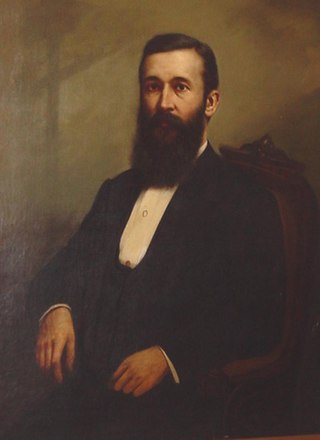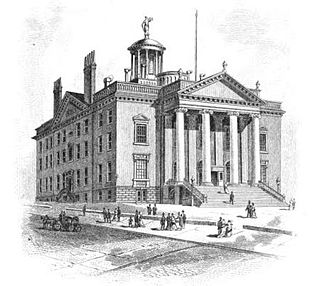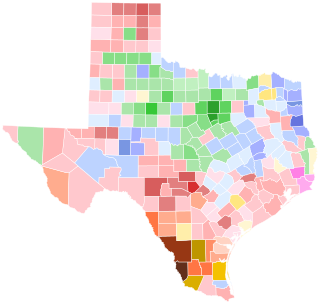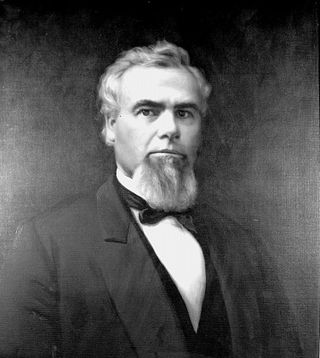
Presidential elections were held in the United States on November 5, 1872. Incumbent President Ulysses S. Grant, the Republican nominee, defeated Democratic-endorsed Liberal Republican nominee Horace Greeley.

Edward Follansbee Noyes was a Republican politician from Ohio. Noyes served as the 30th governor of Ohio.
The Democratic Party of Wisconsin is the affiliate of the Democratic Party in the U.S. state of Wisconsin. It is currently headed by chair Ben Wikler.
The Massachusetts Republican Party (MassGOP) is the Massachusetts branch of the U.S. Republican Party.

A special judicial election was held on May 17, 1870, to fill the seats on the re-organized New York Court of Appeals.
The 1884 Democratic National Convention was held July 8–11, 1884 and chose Governor Grover Cleveland of New York their presidential nominee with the former Governor Thomas A. Hendricks of Indiana as the vice presidential nominee.

The 1873 United States Senate election in New York was held on January 21, 1873, by the New York State Legislature to elect a U.S. Senator to represent the State of New York in the United States Senate.

The 1872–73 United States Senate elections were held on various dates in various states, coinciding with President Ulysses S. Grant's re-election. As these U.S. Senate elections were prior to the ratification of the Seventeenth Amendment in 1913, senators were chosen by state legislatures. Senators were elected over a wide range of time throughout 1872 and 1873, and a seat may have been filled months late or remained vacant due to legislative deadlock. In these elections, terms were up for the senators in Class 3.

The 1874–75 United States Senate elections were held on various dates in various states. As these U.S. Senate elections were prior to the ratification of the Seventeenth Amendment in 1913, senators were chosen by state legislatures. Senators were elected over a wide range of time throughout 1874 and 1875, and a seat may have been filled months late or remained vacant due to legislative deadlock. In these elections, terms were up for the senators in Class 1.

The 1986 United States Senate election in California took place on November 4, 1986. Incumbent Democratic U.S. Senator Alan Cranston narrowly won re-election to a fourth and final term over Republican U.S. Congressman Ed Zschau. This was the last time where both major party nominees for the Class 3 Senate seat in California were men until 2022.

The 96th New York State Legislature, consisting of the New York State Senate and the New York State Assembly, met from January 7 to May 30, 1873, during the first year of John A. Dix's governorship, in Albany.

The 1942 United States Senate election in Oklahoma took place on November 3, 1942. Incumbent Democratic Senator Joshua B. Lee ran for re-election to a second consecutive term. After winning the Democratic primary against several strong opponents, Lee advanced to the general election, where he was originally set to face former Republican Senator William B. Pine. However, shortly after winning the Republican primary, Pine died; the state Republican Party tapped businessman Edward H. Moore as its replacement nominee. In a favorable Republican environment, Moore defeated Lee by a wide margin to win his first and only term in the U.S. Senate.

The 1961 United States Senate special election in Texas was held on May 27, 1961. The election was held to replace outgoing Senator Lyndon B. Johnson, who had been elected Vice President of the United States.
A Massachusetts general election was held on November 4, 1958, in the Commonwealth of Massachusetts.

Elections were held to elect the New York City Board of Aldermen on November 5, 1929, in concert with other such contests as the Mayor, the Comptroller, the President of the Board of Aldermen, Borough presidents, County Sheriffs, and other miscellaneous questions.

The 1958 Tennessee gubernatorial election was held on November 4, 1958, to elect the next governor of Tennessee. Incumbent Democratic governor Frank G. Clement was ineligible to run for re-election, as the Constitution of Tennessee prohibited governors from serving consecutive terms at the time. Democratic nominee Buford Ellington defeated former governor, Independent Jim Nance McCord, and Republican opponent Tom Wall with 57.5% of the vote.

The 1873 Wisconsin gubernatorial election was held on November 4, 1873. Democratic Party candidate William Robert Taylor was elected with 55% of the vote, defeating incumbent Republican governor Cadwallader C. Washburn.

The 1892 New Hampshire gubernatorial election was held on November 8, 1892. Republican nominee John Butler Smith defeated Democratic nominee Luther F. McKinney with 50.17% of the vote.

The 1871 Ohio gubernatorial election was held on October 10, 1871. Republican nominee Edward Follansbee Noyes defeated Democratic nominee George Wythe McCook with 51.75% of the vote.

The 1924 Indiana gubernatorial election took place on November 4, 1924 under the provisions of the Constitution of Indiana. It was the 31st gubernatorial election in the State of Indiana. Republican Edward L. Jackson defeated Democrat Carleton B. McCulloch. The election took place concurrently with the 1924 United States elections that saw Republicans hold the White House and increase their majorities in both houses of Congress.

















